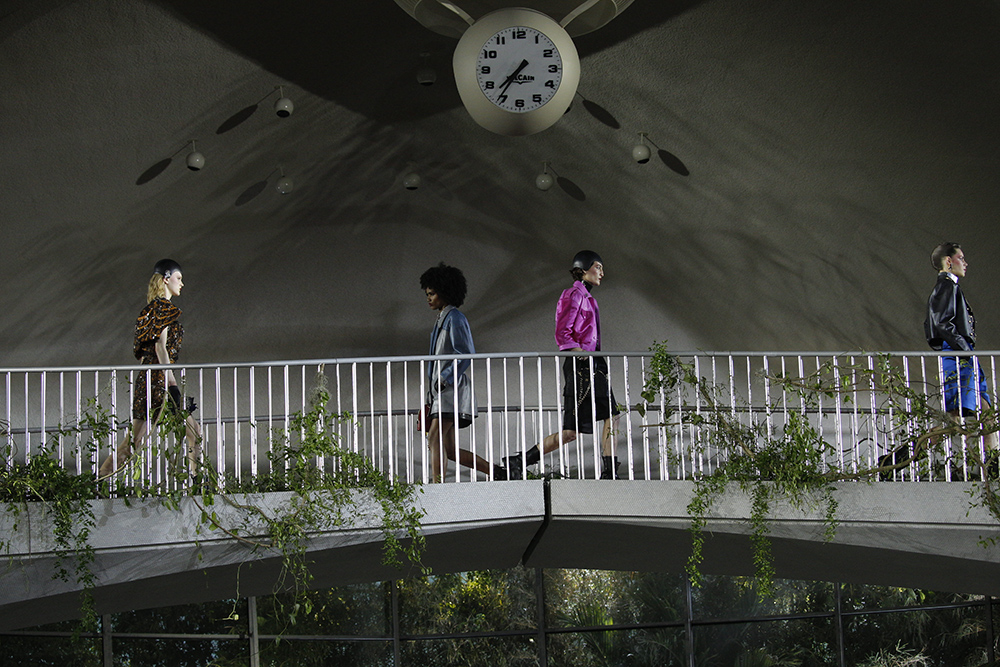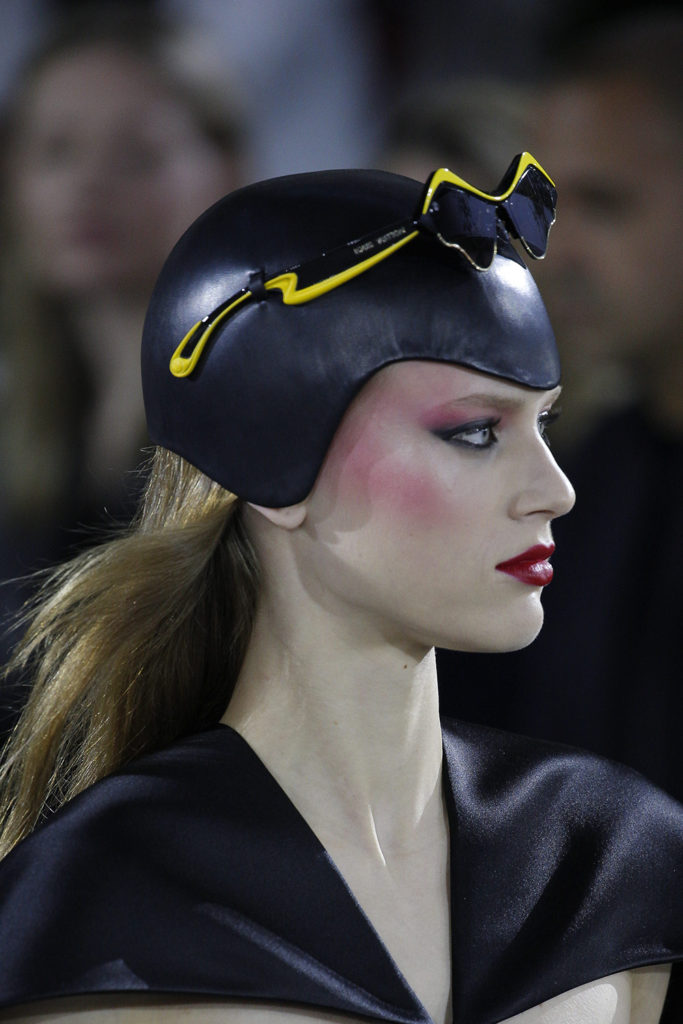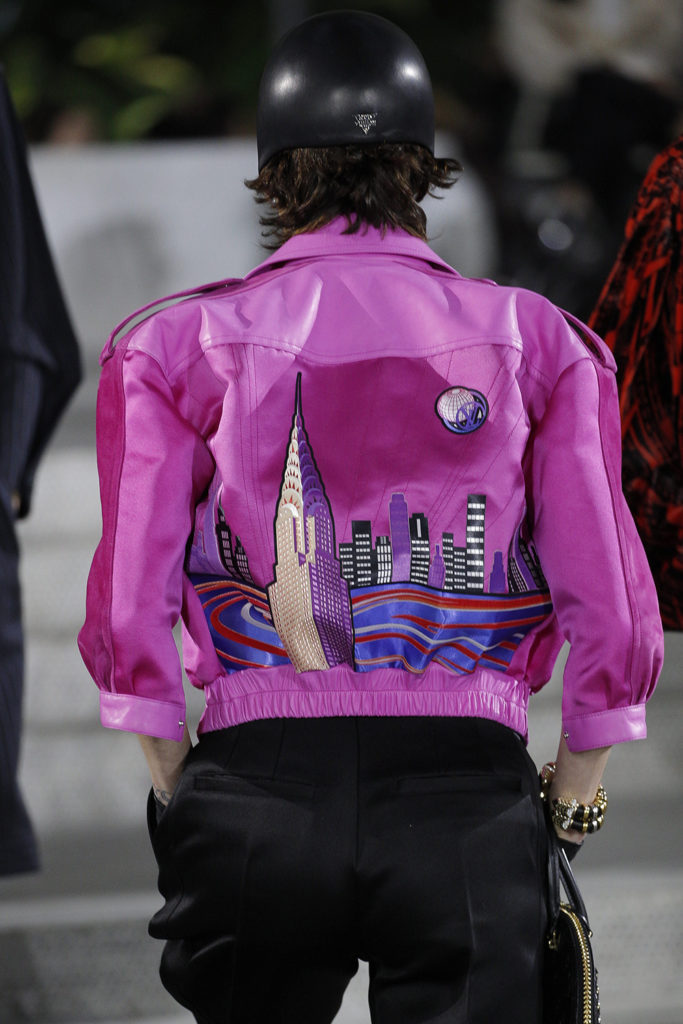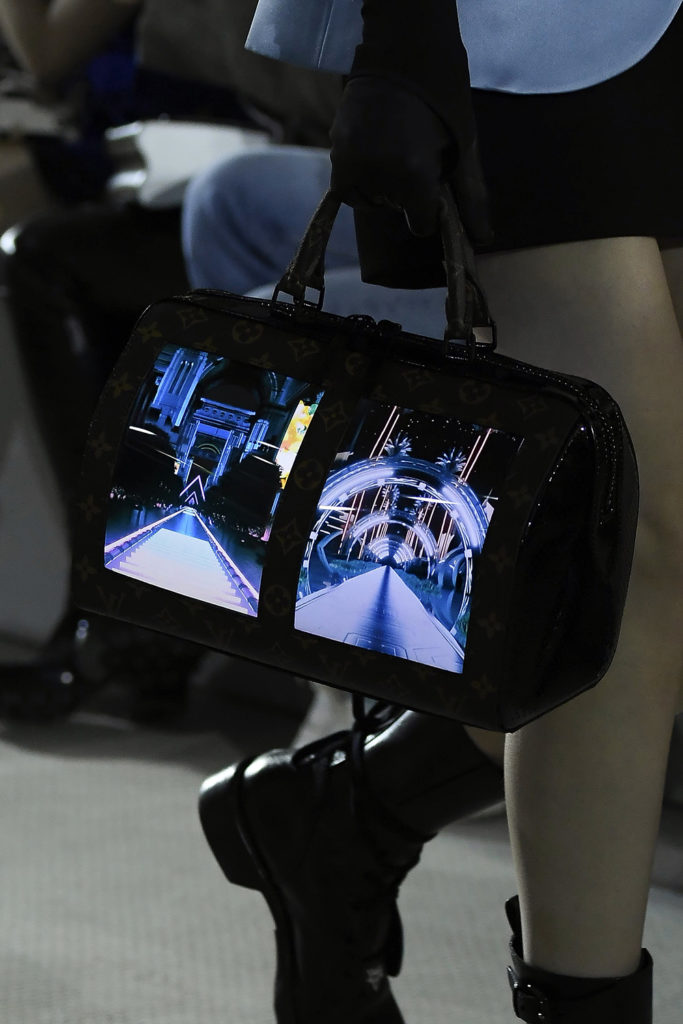
When the models for Louis Vuitton’s Cruise 2020 collection stepped out into New York City’s historic TWA Flight Center, it was as if they were walking through time, with references to various periods of air travel made crystal clear. Aviator hats and sunglasses gave a nod to early 20th-century pilots, miniskirts and perfectly coiffed hair were reminiscent of ’60s flight attendants, and bomber jackets with powerful shoulder pads evoked the Top Gun era—each serving as a reminder of the once-glamorous appeal of taking flight.
The future-forward runway show served as the unofficial opening for the newly renovated terminal at JFK Airport. Once the epitome of new-age airway transportation, the terminal is now making a comeback in the form of a luxe hotel. It was only fitting for Louis Vuitton—a brand whose luggage was the most popular choice for passengers on the first transatlantic steamship crossing from Paris to New York—to christen the terminal’s opening. In fact, the collection itself served as an homage to the unique dialogue between these two cities, speaking to the American fascination with French fashion and the French’s attraction to New York’s energy.

Creative director Nicolas Ghesquière showcased his love of New York architecture in the collection, featuring several references to the city’s Art Deco era. The Chrysler Building in particular inspired him, with dresses and handbags designed to look like its legendary spire. There were also nods to the TWA Flight Center itself in the form of capelets constructed with a similar winged design. For Ghesquière, the terminal captivated his imagination from the moment he laid eyes on it. “I was lucky enough to have landed at the TWA Flight Center in the late ’90s,” says Ghesquière. “It was something I could never forget. This place was forgotten for 20 years, and now has come back to life.”
Designed by Eero Saarinen in 1962, the terminal was an important hub in the heyday of the “Jet Age,” when traveling overseas first became widely accessible. It was shut down in 2001 and sat empty for nearly two decades, save for its moments as a film set for movies like Catch Me If You Can and Ocean’s 8. Ghesquière is excited to see the terminal revived in its new iteration as a hotel, believing it to be an important piece of New York history. “It’s about [the rediscovery] of an uncommon place that is a part of American heritage,” Ghesquière explains.
The references to New York didn’t stop there. Brightly coloured prints of the city’s skyline were splashed onto jackets, representing the view of New York City from an arriving plane. The pinstriped suits were distinctively Wall Street, and the steel-toed combat boots urbanized the collection.
Always managing to modernize the iconic brand in new and exciting ways, Ghesquière is continously bringing innovation to a maison with legendary savoir faire. One such example is the reimagining of the brand’s staple monogrammed handbags, which were affixed with flexible OLED screens that displayed moving imagery of cityscapes—an artistic approach to wearable tech and a first for the maison.
The French designer’s vision was thoroughly thought out for Louis Vuitton’s Cruise 2020 collection, down to the runway environment itself. Setting the scene of a bustling airport, models quickly walked around the terminal’s different levels, but the space overflowed with foliage, creating the feel of an airport that has been overgrown and forgotten—a beautifully poetic way to welcome the terminal back into the public eye.
Photos courtesy of Louis Vuitton.




